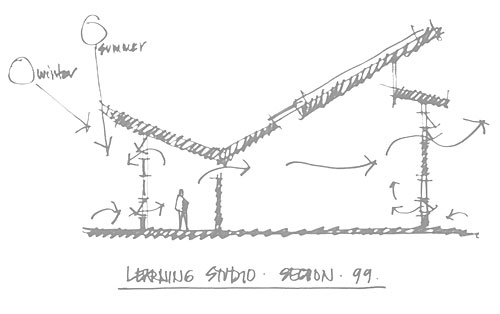Windows and Sustainability: An Environmental Perspective
|
Sustainable Sites
Windows and doors can contribute to one point in the Sustainable Sites category.
Light Pollution Reduction, Credit 8 seeks to minimize light trespass from the building and site, reduce sky-glow to increase night sky access, improve nighttime visibility through glare reduction, and reduce development impact on nocturnal environments. Although most of this credit addresses outdoor lighting, it mentions light trespass from interior lighting that shines out through windows at night. The proper use of window treatments, to reduce glare, or direct lighting onto neighboring property, streets or night sky, can contribute to
this credit.
Water Efficiency
The second major category, Water Efficiency, has no contributions from windows and doors.
Energy and Atmosphere
In the third category, Energy and Atmosphere (EA), windows and doors can contribute to one prerequisite and up to 13 points.
Minimum Energy Performance, Prerequisite 2 calls for establishing the minimum level of energy efficiency for proposed buildings and systems. Building projects should be designed to comply with both the mandatory provisions (Sections 5.4, 6.4, 7.4, 8.4, 9.4, and 10.4) of the American Society of Heating, Refrigerating and Air-Conditioning Engineers (ASHRAE)/IESNA Standard 90.1-2004 (without amendments), and the prescriptive requirements (Sections 5.5, 6.5, 7.5, and 9.5) or performance requirements (Section 11) of ASHRAE/IESNA Standard 90.1-2004 (without amendments).
Potential strategies include designing the building envelope, HVAC, lighting, and other systems to maximize energy performance. The ASHRAE 90.1-2004 User's Manual contains worksheets that can document compliance with this prerequisite. For projects pursuing points under EA Optimize Energy Performance, Credit 1, computer simulation modeling may be used for confirmation of this prerequisite.
If a local code has demonstrated quantitative equivalence following, at minimum, the DOE standard process for commercial energy code determination, then it may be used to satisfy this prerequisite instead of ASHRAE 90.1-2004. For details on the DOE process for commercial energy code determination, seewww.energycodes.gov/implement/determinations_com.stm.
Optimize Energy Performance, Credit 1 addresses increasing levels of energy performance above the baseline in the prerequisite standard to reduce environmental and economic impacts associated with excessive energy use. The number of points increases as energy costs decline. Project teams can select one of three compliance path options. Documenting achievement using any of the three options is assumed to be in compliance with EA Minimize Energy Performance, Prerequisite 2. The options are: Option 1: Whole Building Energy Simulation (1-10 points), Option 2: Prescriptive Compliance Path for small office buildings (four points), and Option 3: Prescriptive Compliance Path (one point).
|
|||
Many window strategies can be used to help achieve Credit 1, including:
- Minimize undesirable air infiltration. Window weather-stripping at the sash to frame juncture and backer rod and sealant/foam at the window to opening intersection reduce air infiltration.
- Locate windows and shading devices to maximize day lighting and minimize heat gain.
- Use high performance glazing to optimize natural day lighting, heating, and cooling. Low emissivity glass reduces heat gain while allowing visible light. Triple glazing offers center glass U-values as low as 0.16.
- Avoid thermal bridging from metal framing by specifying fiberglass, vinyl, or wood frames or aluminum frames with high performance thermal breaks.
- Locate windows to employ natural ventilation and reduce reliance on energy-dependent mechanical systems.
- Specify between-the-glass blinds since they perform better than room side blinds. With the blinds closed, between-the-glass blinds offer an 18-percent improvement in total window U-value and a 43 percent reduction in solar heat gain when compared to roomside blinds.
On-site Renewable Energy, Credit 2, encourages and recognizes increasing levels of on-site renewable energy self-supply, to reduce environmental and economic impacts associated with fossil fuel energy use. Use of on-site renewable energy systems will offset building energy cost. Project performance can be calculated by expressing the energy produced by the renewable systems as a percentage of the building annual energy cost. Points can be achieved based on the percentage of renewable energy used: 2.5 percent achieves one point, 7.5 percent achieves two points, and 12.5 percent achieves three points.
Projects can be assessed for non-polluting and renewable energy potential, including the use of photovoltaics in building elements such as the roof, exterior cladding, or window systems.










